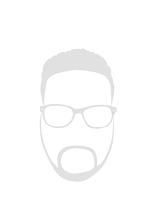Below are my findings for the National History Museum:
The majority of their signs and directions were clear and concise however there are a few examples where I felt directions could have been bigger or better placed. For example when I came from the station (the way I took) and headed towards to the museum, I initially missed the sign telling me that the Cromwell Road Gates were closed
I only took this once I had got to Cromwell Road Gates and realized they were closed and therefore had to turn back and come through the garden entrance as stated in the picture. This might have been my own lack of concentration admittedly, but equally each time I have come to this museum I have always used Cromwell Road Gates entrance. So I feel in this instance the signs could have been better placed (maybe earlier) before the arrival at the museums usual entrance, to avoid confusion.
One of the other entrances into the actual exhibition we were visiting ( Wildlife Photographer of The Year) were very straight forward and clearly communicated before we even got into that section inside. At one of the entrances you knew exactly what event was going on inside due to the signs I felt this was very effective.
Once you are inside all the signs are clearly labelled, for everyone to see and be guided to the Wildlife Photographer of the Year exhibit, by the directions of the signs which I felt were effective. The use of colour, signs and imagery size (orange, fox) were strong and helped the progress through the exhibition.
As seen in the photos it is clear to see the positioning of the signs towards the exhibition were very effective, strong and communicated clearly alongside the fire exit it couldn't really be missed, so again I felt it was strong positioning for both the health and safety sign and for the exhibition sign. Once you were in you either buy tickets (as a member) or show the tickets already purchased beforehand to avoid the queue, I think the membership forms were cleverly placed directly after the purchase tickets area almost enticing one to get signed up as a member instantly especially to avoid queuing.
Once you're through the tickets and membership area you come through to the start of the exhibition and are immediately addressed by a map with a key, but before I actually went into the first section of the exhibition I wondered around the area to see if there was anything I could spot. Behind the door and between a wall (perhaps conveniently placed) was a fire alarm and it's sign. I personally feel this wasn't in the best of places to spot but you could argue that maybe they wanted it hidden from plain sight, however if hypothetically there was a fire in the building and no members of staff were in that specific area to alert the public I believe visitors would struggle to locate this fire alarm it wasn't so straight forward. Below are the images of the map and fire alarm:
Moving onto the next section 'earth's diversity and 'first shoots' there was an arrow leading you to that area but I noticed it wasn't very noticeable, I think this was due to the lighting the sign was dimly lit, however I think because of the way the exhibition was set up you would naturally veer towards earth's diversity and first shoot. Due to the layout (key/map) the first section we come across is the 'earth's diversity & first shoots' the area in which young photographers work are displayed. I wasn't sure if this was because of it's type (17 years old or younger) but I noticed it was the only grey board with the information on it whereas the others were black. I'm also not so sure how effective the type of green on the grey background was, I don't know if it was my camera (quite poor quality if I'm honest) but I thought the grey on green made it a bit difficult to read, I felt it was a bit off in terms of colour and either a darker green or lighter green would have made for better reading. But the entire section itself I felt displayed the photographers work perfectly I couldn't really find too much fault. Below are the images of the dimly lit arrow sign and the grey board with the information:
The other images that I had taken were more clear in what was being communicated the directions, the work categories that will be on display in a specific area and the map of where you currently are and where you can navigate to next. I felt majority of the exhibition was straightforward and seamless in both form and function. Below are the remaining images that I had taken of the signs of the exhibition:
Overall I think the way the museum displayed their identity, location of signs and symbols were very well placed and noticeable for the public to see without much of an effort needed. Despite the odd anomaly in some communication signs the system in place works consistently and is successful.





























No comments:
Post a Comment